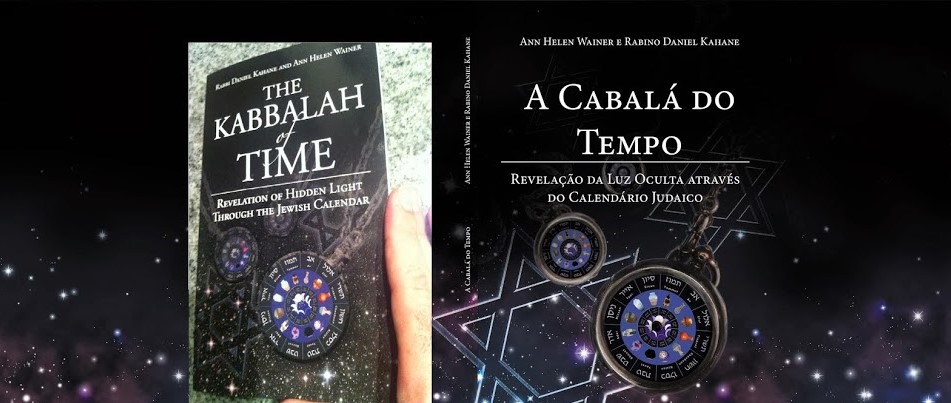STORY
OF CHANNAH: 5 They that were full have hired out themselves for bread; and they that
were hungry have ceased; while the barren hath borne seven, she that had many
children hath languished.
PIRKEI AVOT ON THE GREATNESS OF
TORAH: And it says (ibid. 3:8): "It
shall be health to your navel, and marrow to your bones."
ECCLESIASTES:
Chapter 2
TZADDIKIM: Rabbi Mordechai ("Mottel") of Chernobyl (20th of Iyar) and Rabbi Mordechai ("Mottele") Twersky from Rachmistrivka (17th Iyar)
On Week 33, the week of Lag Ba’Omer, the verse from the story
of Hannah continues the theme as last week, but the focus is on physical
wealth and health, particularly the ability to have children.
Regarding the greatness of the Torah, Pirkei Avot also focuses on the physical,
and also seems to allude to procreation, “It shall be health to your navel, and
marrow to your bones."
Chapter 2 of Ecclesiastes is primarily
about describing the pleasures of the body and physical wealth:
1. I said to myself, "Come now, I
will mix [wine] with joy and experience pleasure"; and behold, this too
was vanity.
2. Of laughter, I said, "[It is]
mingled"; and concerning joy, "What does this accomplish?"
3. I searched in my heart to indulge my
body with wine, and my heart conducting itself with wisdom and holding onto
folly, until I would see which is better for the children of men that they
should do under the heavens, the number of the days of their lives.
4. I made myself great works; I built
myself houses, and I planted myself vineyards.
5. I made myself gardens and orchards, and
I planted in them all sorts of fruit trees.
6. I made myself pools of water, to water
from them a forest sprouting with trees.
7. I acquired male and female slaves, and
I had household members; also I had possession of cattle and flocks, more than
all who were before me in Jerusalem.
8. I accumulated for myself also silver
and gold, and the treasures of the kings and the provinces; I acquired for
myself various types of musical instruments, the delight of the sons of men,
wagons and coaches.
9. So I became great, and I increased more
than all who were before me in Jerusalem; also my wisdom remained with me.
10. And [of] all that my eyes desired I
did not deprive them; I did not deprive my heart of any joy, but my heart
rejoiced with all my toil, and this was my portion from all my toil.
11. Then I turned [to look] at all my
deeds that my hands had wrought and upon the toil that I had toiled to do, and
behold everything is vanity and frustration, and there is no profit under the
sun.
This week also includes many yahrzeits,
including two prominent rebbes who descended from the Chassidic line of
Chernobyl: Rabbi Mordechai ("Mottel") of Chernobyl (20th of
Iyar) and his grandson who named
after him, Rabbi Mordechai ("Mottele") Twersky from Rachmistrivka
(17th Iyar).
From Ascent:
Rabbi Mordechai ("Mottel") of Chernobyl [1770 - 20 Iyar
1837], successor to his father, Rabbi Nachum, was the son-in-law of Rabbi
Aharon the Great of Karlin and subsequently of Rabbi David Seirkes, an
important disciple of the Baal Shem Tov. His eight sons all became major
Chasidic leaders. One of them Yaakov Yisrael Twerski of Cherkassy, the first
Hornsteipel Rebbe, married Devora Leah, one of the six daughters of Rabbi
DovBer of Lubavitch, son of Rabbi Shneur Zalman of Liadi (match arranged by the
two grandfather-Rebbes), in order to maximize the possibilities for fulfillment
of the prediction, "the Moshiach will be born of the elder disciple of the
Maggid of Mezritch or the youngest."
Rabbi Mordechai ("Mottele") Twersky from
Rachmistrivka (?- 17 Iyar 1921) moved to Jerusalem from Europe in 1908. He was
known for his sharp mind and many business men used to seek his advice. He
himself was a skilled craftsman, who did complex engravings from silver and
copper. His father, Rabbi Yochanan Twerski, son of the famous Rebbe Mottele of
Chernobyl, was the first Rebbe of the Rachmistrivka dynasty.
Other yahrzeits this week include R' Chaim Meir Yechiel Shapira, "the Saraph" (fiery angel) of Moglenitz (15th of Iyar), Rabbi Shmuel (of Karov-Vinagrov (15th of Iyar), Rabbi Moshe Chaim Ephraim of Sudylkov (the Degel Machaneh Ephraim, 17th of Iyar), Rabbi Moshe Isserles (the Ramah, 18th of Iyar), Rabbi Menachem Mendel of Riminov (19th of Iyar), Rabbi Shmuel Abuchatzeira (the forefather of the Abuchatzeira dynasty, 19th of Iyar), and Rabbi Yechi ben R' Avrohom Abuchatzeira (20th of Iyar).
